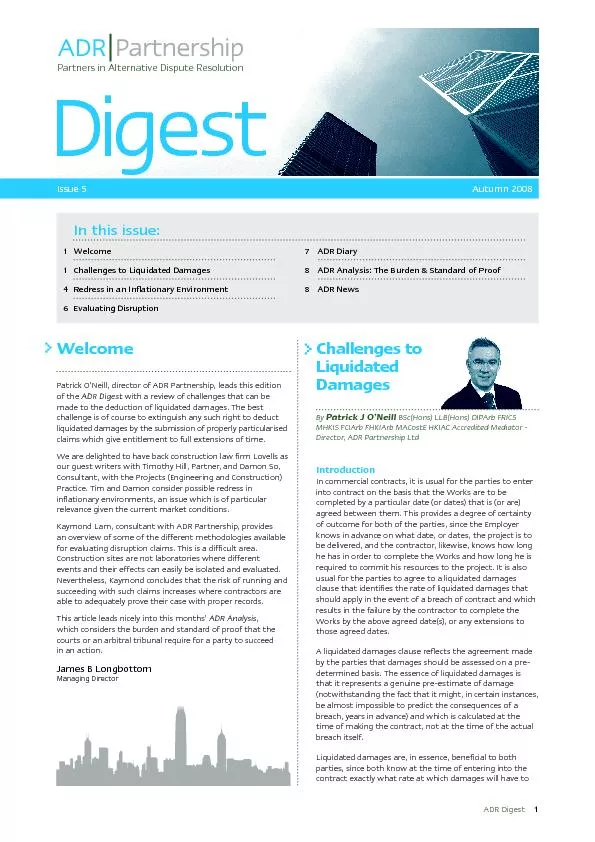PDF-Challenges to
Author : tawny-fly | Published Date : 2016-06-21
Digest Autumn 2008 Issue 5 Liquidated Damages By Patrick J O146Neill BScHons LLBHons DIPArb FRICS MHKIS FCIArb FHKIArb MACostE HKIAC Accredited Mediator Director
Presentation Embed Code
Download Presentation
Download Presentation The PPT/PDF document "Challenges to" is the property of its rightful owner. Permission is granted to download and print the materials on this website for personal, non-commercial use only, and to display it on your personal computer provided you do not modify the materials and that you retain all copyright notices contained in the materials. By downloading content from our website, you accept the terms of this agreement.
Challenges to: Transcript
Download Rules Of Document
"Challenges to"The content belongs to its owner. You may download and print it for personal use, without modification, and keep all copyright notices. By downloading, you agree to these terms.
Related Documents














